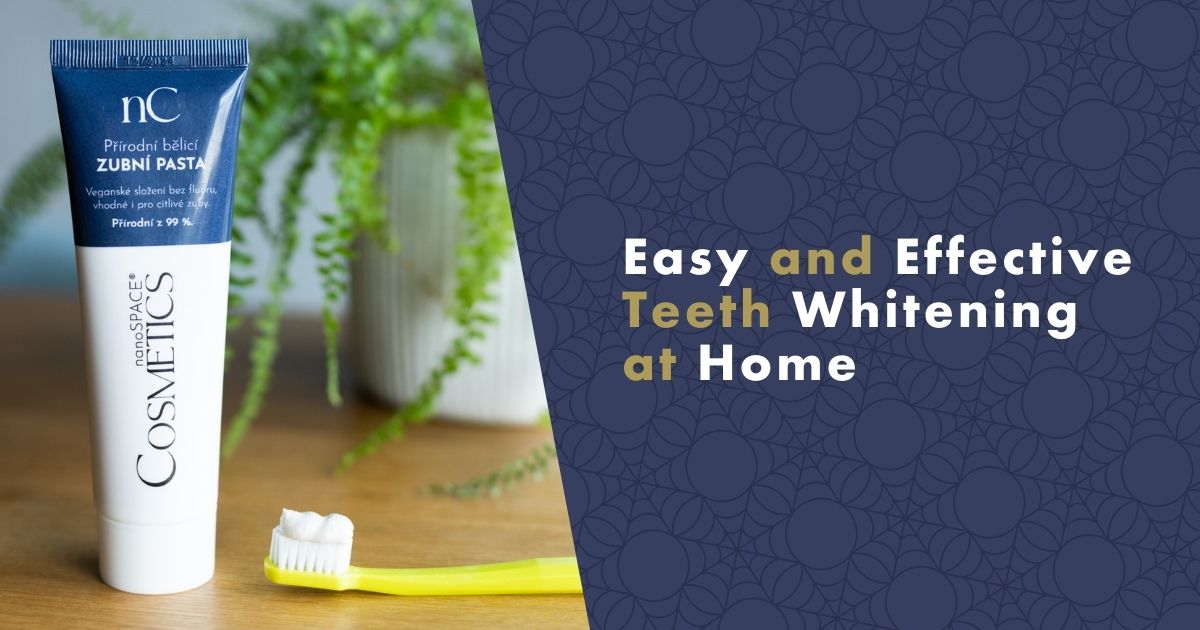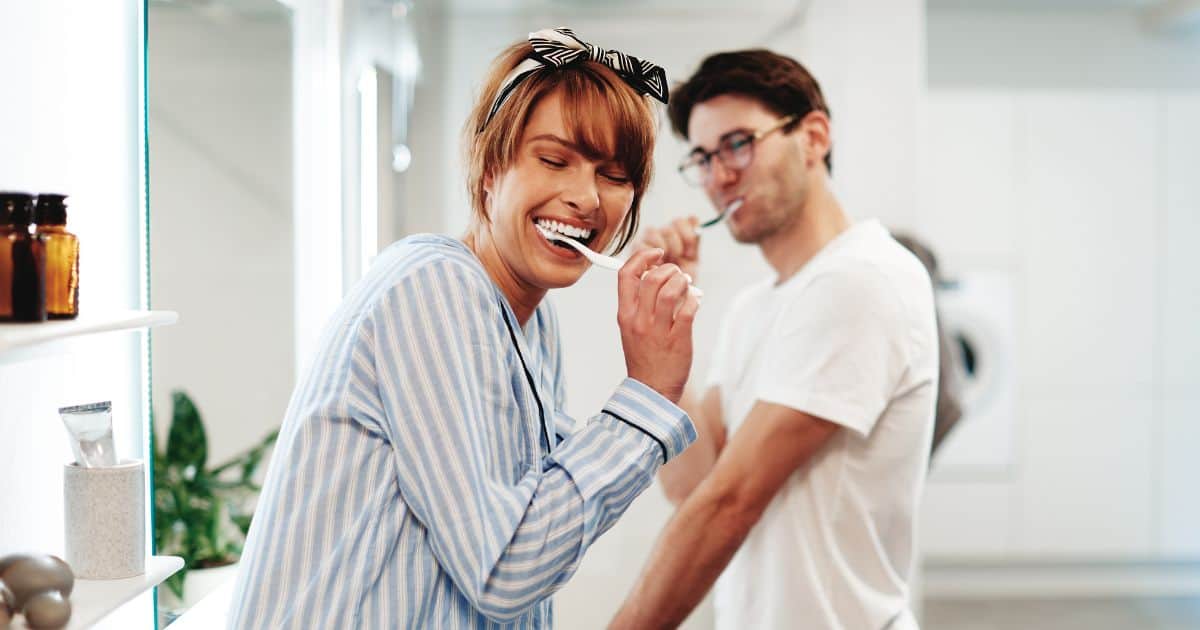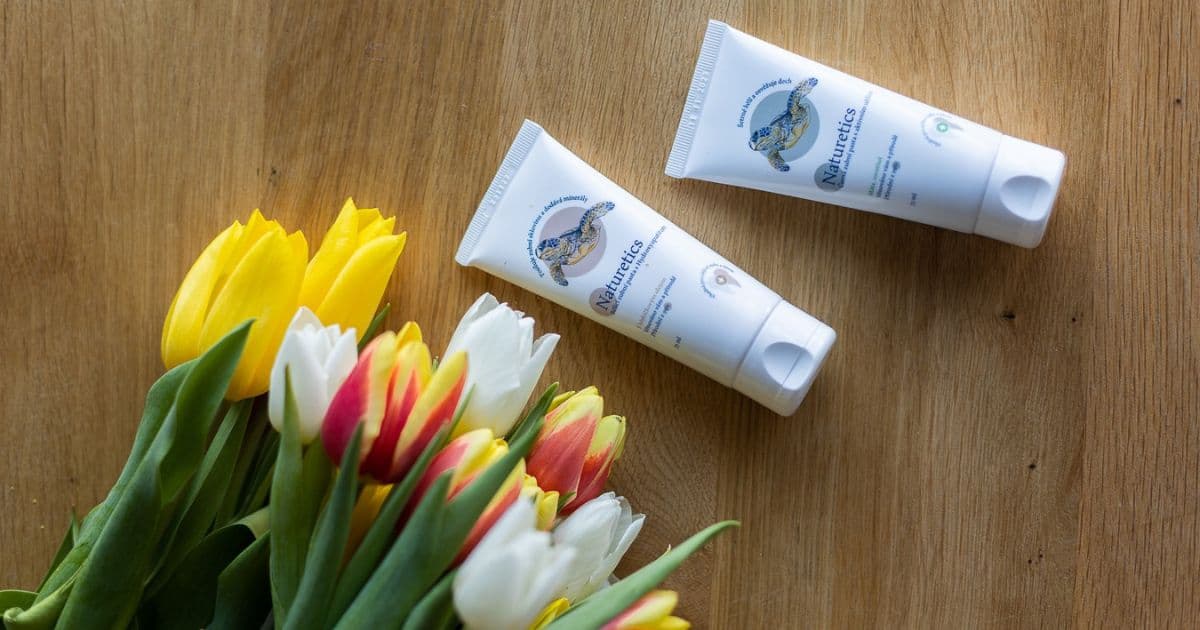Yellowed teeth don't make a great first impression. If you find that traditional whitening toothpaste causes discomfort in your gums, we've got some great news for you. Recent research reveals that the most effective natural option for teeth whitening is hydroxyapatite, and it's even gentle enough for those with sensitive teeth. Let's delve into what hydroxyapatite is, how it functions, and what you should steer clear of.

What Causes Tooth Yellowing?
Tooth yellowing can be caused by external factors (consumption of inappropriate beverages and food) as well as genetics and previous illnesses. Let's take a detailed look at it.
Food and Beverages
External tooth discoloration is caused by substances that adhere to the tooth's surface. These include:
- Coffee and tea: They contain tannins and pigments that can stain the tooth's surface.
- Red wine: It contains dark coloring that can adhere to the tooth's surface and cause discoloration.
- Fruits and vegetables: Some types of fruits and vegetables, such as carrots and oranges, contain natural pigments that can settle on the tooth's surface.
- Tobacco: Smoking and chewing tobacco contain substances that can cause stains and tooth yellowing.
Bacteria present in the oral cavity can also produce pigments that can adhere to the tooth's surface and contribute to its discoloration. The layer of salivary protein that naturally forms on the tooth's surface can enhance the deposition of pigments on the tooth's surface. These factors gradually contribute to external tooth discoloration and can be one of the causes of their aesthetic imperfection.
Illnesses and Genetics
Some illnesses and genetics have an impact on how our teeth look. So, what can cause unaesthetic tooth discoloration?
- Genetic disorders: Some genetic factors can contribute to internal tooth discoloration.
- Tetracycline: Taking the antibiotic tetracycline during childhood can cause tooth discoloration.
- Fluoride intake: Excessive fluoride intake during childhood can lead to fluorosis, which is tooth discoloration caused by an excess of fluoride.
- High fever: High fever associated with childhood illnesses can also cause tooth discoloration when breakdown products from pulp tissue penetrate into dental tubules.
- Injury: Injury or loss of blood supply to dental tissue can lead to tooth discoloration because breakdown products from dental tissue can penetrate into dental tubules.
What is Fluorosis?
Adding fluoride to toothpaste has both supporters and opponents. Some negative views on its use point to a condition called fluorosis. It is caused by an excessive amount of fluorides. Its manifestations include color changes on the tooth enamel, from slightly whitish to brown spots.
The normal daily dose of fluoride is about 0.5 mg in food and should cover the necessary needs for dental cavity prevention. However, if a person consumes more than 8 mg of fluoride, it can lead to bone remodeling.
The History of Toothpaste
In ancient Egypt, they not only focused on body hygiene but also dental care. It's no wonder that the first mentions of toothpaste come from there, dating back to around 4th century BC. Interestingly, the Egyptians used iris flowers, peppermint leaves, pepper, and salt to prepare their toothpaste.
Even the ancient Romans used a teeth whitener. It might surprise you that its main ingredient was human urine. It contains ammonia, which whitened teeth. In North America, people in the 18th century cleaned their teeth with burnt bread paste.
In the 19th century, tooth powder made from chalk and salt, with crushed bricks added, became popular and was mostly produced at home. At the beginning of the 20th century, baking soda and hydrogen peroxide toothpaste came into fashion. It wasn't until 1914 that fluoride was added to toothpaste, playing a crucial role in preventing tooth decay by slowing down the growth and metabolism of bacteria living in the oral cavity.

Why Not Use Traditional Whitening Toothpaste
If you've been thinking that toothpaste is meant to remove dental plaque, tartar, or food particles from your teeth, you're quite mistaken. This role is fulfilled by your toothbrush. Toothpaste or gel primarily polish the surface of your teeth, removing unsightly discoloration and freshening your breath.
Most available toothpaste products contain parabens in addition to the aforementioned fluoride, which are not desirable. This also applies to SLS, or sodium lauryl sulfate, which is a foaming agent that can cause gum irritation, skin dryness, or reduced taste receptors. PEG, or polyethylene glycol, is used as a humectant in toothpaste, stabilizing solutions. It, too, can cause skin irritation.
It's clear, therefore, that traditional toothpaste products are typically loaded with chemicals. For your health, it would be better to choose among organic toothpaste options.
What Is the Best Fluoride-Free Whitening Toothpaste
Today, it's easy to find vegan toothpaste with hydroxyapatite on the market, which is gentle on the human body. These toothpaste products typically do not contain fluoride or artificial sweeteners, microplastics, aluminum salts, or parabens. It's advisable to use them if you care about your health and the environment.
Hydroxyapatite is a form of calcium apatite, which is a mineral commonly found in nature. It is the main component of human bones and teeth. When included in toothpaste, it has a positive impact on teeth because it provides them with calcium and phosphorus, strengthening tooth enamel and polishing the tooth's surface at the same time.
Circular Ingredients in Whitening Toothpaste
From an environmental perspective, toothpaste products manufactured based on the principles of circular cosmetics are essential. Its functioning is straightforward: previously used materials can become the primary sources for producing new products. This way, there is no burden on the environment because a circular economy plays the central role.
Brands like nanoSPACE Cosmetics and Naturetics produce circular cosmetic products. They prioritize not only effectiveness and skin-friendliness but also eco-friendliness.

Tip: What Is Circular Cosmetics? Learn more in the article.
How to Achieve Effective Teeth Whitening at Home
Regular consumption of black coffee or black tea can lead to unpleasant discoloration of tooth enamel. Yet, having a bright smile with white teeth is desirable. How can you achieve that?
Try toothpaste with hydroxyapatite, which recent studies have shown to be one of the best natural alternatives for teeth whitening. Hydroxyapatite is the main component of the mineral part of teeth and bones and has the ability to remineralize and strengthen tooth enamel. When hydroxyapatite is used in toothpaste, it can help remove undesirable stains and pigmentation on the teeth. Hydroxyapatite nanoparticles act as a natural abrasive that gently removes impurities and discoloration on the tooth's surface.
In addition to teeth whitening, toothpaste with hydroxyapatite can also strengthen and remineralize tooth enamel, improving overall tooth health. Hydroxyapatite nanoparticles also have an excellent ability to bond with teeth, providing effective protection against acids and bacteria in the mouth, which helps prevent tooth decay and gum inflammation.
Using toothpaste with hydroxyapatite is ideal for people with sensitive teeth because the remineralization effects can reduce tooth sensitivity to heat and cold. Another advantage of using hydroxyapatite toothpaste is that it contains natural ingredients that are eco-friendly and safe for human health.
Vegan Whitening Toothpaste
In the whitening toothpaste from nanoSPACE Cosmetics, hydroxyapatite and the natural polymer P3HB are used, which, due to their properties, function as a substitute for synthetic materials that burden both nature and humans. It is a natural substance obtained using European HYDAL technology, in which used natural oil is transformed into natural biomaterial P3HB with the help of bacteria. This is a substance that is fully biodegradable in nature, biocompatible, and nontoxic.
#produkty#https://www.nanospace.store/search/?string=toothpaste
Tip: Curcumin and Its Effects on Health – What Can It Relieve? Read it on our blog.
Is It All About Quality Whitening Toothpaste?
We've already explained that toothpaste primarily has a cosmetic effect on teeth. So, in reality, it's not even necessary to use it. What's more important is the right choice of toothbrush and regular teeth cleaning, including the use of interdental brushes or dental floss. For the health of your teeth, it's good to visit your dentist once every six months. Professional dental hygiene is not in vain, during which dental calculus is removed from the teeth.
How to Prevent Yellow Teeth and Maintain a Beautiful Smile
A beautiful smile with white teeth is the desire of many people. However, many factors can contribute to tooth yellowing and a decrease in their aesthetic appearance. Nevertheless, there are several ways to prevent yellow teeth and keep them white. Here are some useful tips:
-
Thorough Oral Hygiene: Regularly brushing your teeth at least twice a day for a minimum of two minutes is the key to keeping your teeth clean and removing dental plaque. Use a quality toothbrush and dental floss or interdental brushes to clean between your teeth. Don't forget to have regular dental hygiene visits and check-ups with your dentist.
-
Limit the Consumption of Foods and Drinks that Stain Teeth: Some foods and drinks, such as coffee, tea, red wine, soy sauce, or dark berries, can contribute to tooth discoloration. Try to limit their consumption or clean your teeth or use mouthwash after consuming them. Tip: When drinking iced coffee, use a straw to prevent contact with your teeth.
-
Reduce Smoking and Alcohol: Smoking tobacco and excessive alcohol consumption are harmful to both health and teeth. If you want to keep your teeth white, it's best to quit these bad habits.
-
Use Toothpaste with Whitening Effects: There are many toothpaste products on the market that contain whitening ingredients, such as hydroxyapatite, which helps remove surface stains and improve the whiteness of teeth. Using these special toothpaste products can contribute to keeping your teeth white.
-
Regular Mouthwash: Mouthwashes help remove bacteria and surface stains that contribute to tooth yellowing.
Frequently Asked Questions
Is it better to use toothpaste with or without fluoride?
Excessive fluoride can damage tooth enamel and cause dental fluorosis, which results in the appearance of white or yellow spots on teeth.
Is it advisable to use whitening toothpaste with silicates?
Silicates help strengthen tooth enamel and prevent the formation of dental calculus. This can prevent tooth decay and help maintain healthy and strong teeth. Silicates are generally labeled as "sodium silicate" or "calcium silicate" in the ingredient list of toothpaste. It's important to note that silicates are a natural component found in tooth enamel, and their presence in toothpaste is considered safe.
Do we need toothpaste for teeth cleaning?
Toothpaste helps remove dental plaque more effectively and efficiently. However, regular oral hygiene is essential, which includes not only using toothpaste but also using dental floss and regular visits to the dentist. Toothpaste contains substances that help remove plaque and prevent the formation of dental calculus, which is crucial for maintaining healthy teeth. It remains a fact that with proper and thorough teeth cleaning using a toothbrush, toothpaste is not necessary for dental and gum health. Nevertheless, it's always important to maintain regular oral hygiene and visit the dentist regularly.
What are whitening toothpaste for?
Whitening toothpaste is designed to help remove stains and prevent their formation. These toothpaste products contain whitening agents that help remove stains from the surface of the teeth and contribute to their lightening. There are various types of whitening toothpaste, including those for home use and those used in dental offices.
Do whitening toothpaste work?
Yes. Whitening toothpaste can help brighten teeth and remove stains when used correctly and in combination with other dental care, such as regular teeth cleaning and interdental care. It's important to be aware that whitening toothpaste is not a miraculous solution and cannot lighten teeth by more than a few shades.
What is the best natural fluoride-free teeth whitening toothpaste?
The most suitable ones are whitening pastes with hydroxyapatite. Hydroxyapatite is a mineral component naturally found in tooth enamel. Its presence in toothpaste can help restore and strengthen tooth enamel, potentially preventing the formation of tooth decay and dental calculus.
What is fluorosis?
Fluorosis is a condition in which the appearance of teeth changes due to excessive fluoride in the body. It manifests as white or yellow spots on the teeth, which can also be fragile and easily damaged.
Fluorosis most commonly occurs in children when their teeth are still developing, but it can also occur in adults. It can occur when the body receives too much fluoride, such as through drinking water or food. Fluorosis can also occur if toothpaste with high fluoride content is used.
What is hydroxyapatite?
Hydroxyapatite is a form of calcium apatite mineral that is widely found in nature and comes in various colors. Human bones and teeth are mostly made up of hydroxyapatite. One of its advantages is that it is completely biocompatible and nontoxic. In toothpaste, it significantly contributes to dental care by providing minerals (calcium and phosphorus), strengthening tooth enamel, smoothing the tooth's surface, and ultimately making teeth whiter.
Sources
-
Chakraborty, A., & Priyadarshini, B. M. (2021). Hydroxyapatite nanoparticles in toothpaste and their applications in oral healthcare: A review. Journal of Materials Research and Technology, 12, 222-235.
-
O’HAGAN-WONG, Kelsey, et al. The use of hydroxyapatite toothpaste to prevent dental caries. Odontology, 2022, 110.2: 223-230.
- BOSSÙ, Maurizio, et al. Enamel remineralization and repair results of Biomimetic Hydroxyapatite toothpaste on deciduous teeth: An effective option to fluoride toothpaste. Journal of Nanobiotechnology, 2019, 17: 1-13.
- NEWBRUN, Ernest. What we know and do not know about fluoride. Journal of public health dentistry, 2010, 70.3: 227-233.
- AOBA, T.; FEJERSKOV, O. Dental fluorosis: chemistry and biology. Critical Reviews in Oral Biology & Medicine, 2002, 13.2: 155-170

